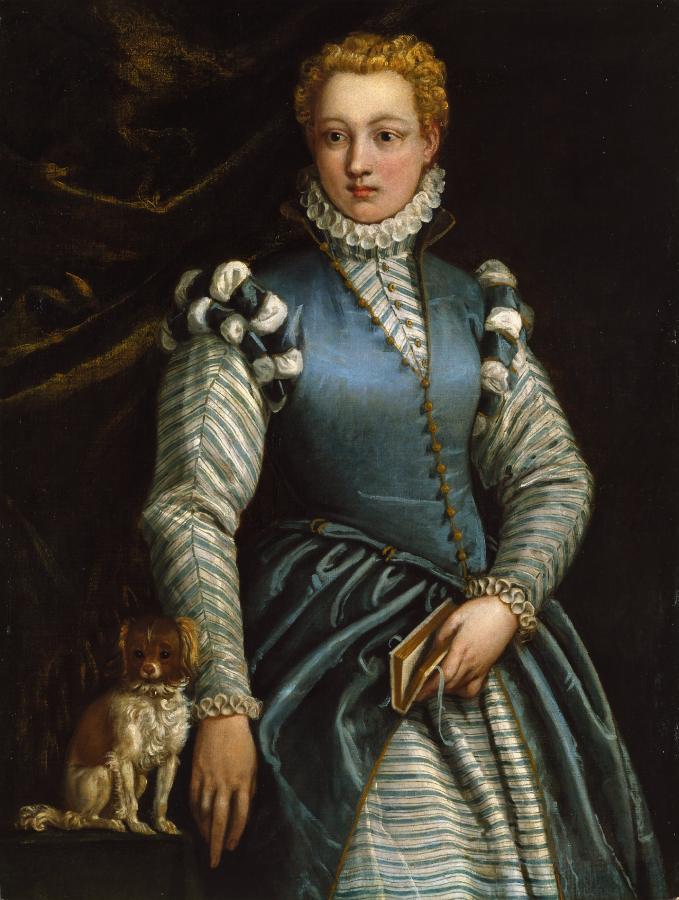Veronese, Paolo (1528-1588)
Ritratto di dama con cagnolino (Portrait of a Woman with a Dog)
c.1560–1570
Oil on canvas, 105 x 79 cm
Museo Thyssen-Bornemisza, Madrid
Along with Titian and Tintoretto, Paolo Caliari — known as Veronese — was one of the great names of Venetian Renaissance art. Veronese trained in his native city of Verona, from where he derived the name by which he was known. The influence of his masters Antonio Badile and Giovanni Caroto is evident in his early output. Among his first works, dating from the 1540s, are religious compositions such as The Lamentation over the dead Christ (Museo di Castelvecchio, Verona), The Mystic Marriage of Saint Catherine (Yale University Art Gallery, New Haven), and the Pala Giustiniani, one of his first commissions in Venice, for the church of San Francesco della Vigna. Veronese achieved renown, however, through his large-scale compositions based on biblical narratives and historical and allegorical episodes. In 1553 the artist moved to Venice to work on the decoration of the Hall of the Council of Ten in the Doge’s Palace, alongside Giovanni Battista Ponchino and Giambattista Zelotti. This project was followed by other important commissions in Venice as well as in Maser and Verona.
Although narrative compositions comprise the most important part of his oeuvre, Veronese also painted portraits, although in fewer numbers. He used the full-length, bust-length and three-quarter formats, depicting his sitters alone or with children, as in the early portrait in the Musée du Louvre in which a woman holds a young boy by the hand, and the two images of Iseppo and Livia da Porto with their children (Palazzo Pitti, Florence, and Walters Art Gallery, Baltimore). All these elegant images use deliberately elongated proportions for the figures and simple backgrounds.
The attribution of the present canvas to Veronese has been debated. While some authors have considered it to be autograph, dating it to a late phase in his career, other have considered it to involve workshop intervention, specifically that of Benedetto, the artist’s brother who worked with him in his studio, and that of Carletto, Veronese’s son.
The canvas depicts a young woman who stands out against a dark background that includes a curtain painted with bright highlights. The figure, on which the light focuses, looks fixedly to her right, richly dressed in tones of blue, white and gold. The details of the materials are painted with great care and attention, particularly the striped pattern on the dress and the combinations of different colours. Anecdotal detail is added by the presence of the lapdog, seated on a small ledge on the left. The Musée du Louvre has a drawing in which Veronese depicts a woman in the same dress and with the same position of the hands, but the head is turned at a different angle. The drawing may have provided the basis for this composition.
It has been suggested that Portrait of a Woman with a Dog was in the collection of Cristoforo and Francesco Muselli in Verona, mentioned by Ridolfi, while it is certainly recorded in an inventory of that collection of 1662. The canvas was in the Thyssen- Bornemisza collection by 1928.
Mar Borobia (T-B)
